I found an algorithm in the appendix I of the chapter titled
JARVIS, Ray. Distance transform based path planning for robot navigation. Recent trends in mobile robots, 1993, 11: 3-31.
That chapter is fully visible to me in Google books and the book is
ZHENG, Yuang F. (ed.). Recent trends in mobile robots. World Scientific, 1993.
A C++ implementation of the algorithm follows:
#include <vector>
#include <iostream>
#include <cmath>
#include <algorithm>
#include <cassert>
#include <sstream>
/**
Algorithm in the appendix I of the chapter titled
JARVIS, Ray. Distance transform based path planning for robot navigation. *Recent trends in mobile robots*, 1993, 11: 3-31.
in the book
ZHENG, Yuang F. (ed.). *Recent trends in mobile robots*. World Scientific, 1993.
See also http://stackoverflow.com/questions/21215244/least-cost-path-using-a-given-distance-transform
*/
template < class T >
class Matrix
{
private:
int m_width;
int m_height;
std::vector<T> m_data;
public:
Matrix(int width, int height) :
m_width(width), m_height(height), m_data(width *height) {}
int width() const
{
return m_width;
}
int height() const
{
return m_height;
}
void set(int x, int y, const T &value)
{
m_data[x + y * m_width] = value;
}
const T &get(int x, int y) const
{
return m_data[x + y * m_width];
}
};
float distance( const Matrix< float > &a, const Matrix< float > &b )
{
assert(a.width() == b.width());
assert(a.height() == b.height());
float r = 0;
for ( int y = 0; y < a.height(); y++ )
{
for ( int x = 0; x < a.width(); x++ )
{
r += fabs(a.get(x, y) - b.get(x, y));
}
}
return r;
}
int PPMGammaEncode(float radiance, float d)
{
//return int(std::pow(std::min(1.0f, std::max(0.0f, radiance * d)),1.0f / 2.2f) * 255.0f);
return radiance;
}
void PPM_image_save(const Matrix<float> &img, const std::string &filename, float d = 15.0f)
{
FILE *file = fopen(filename.c_str(), "wt");
const int m_width = img.width();
const int m_height = img.height();
fprintf(file, "P3 %d %d 255\n", m_width, m_height);
for (int y = 0; y < m_height; ++y)
{
fprintf(file, "\n# y = %d\n", y);
for (int x = 0; x < m_width; ++x)
{
const float &c(img.get(x, y));
fprintf(file, "%d %d %d\n",
PPMGammaEncode(c, d),
PPMGammaEncode(c, d),
PPMGammaEncode(c, d));
}
}
fclose(file);
}
void PPM_image_save(const Matrix<bool> &img, const std::string &filename, float d = 15.0f)
{
FILE *file = fopen(filename.c_str(), "wt");
const int m_width = img.width();
const int m_height = img.height();
fprintf(file, "P3 %d %d 255\n", m_width, m_height);
for (int y = 0; y < m_height; ++y)
{
fprintf(file, "\n# y = %d\n", y);
for (int x = 0; x < m_width; ++x)
{
float v = img.get(x, y) ? 255 : 0;
fprintf(file, "%d %d %d\n",
PPMGammaEncode(v, d),
PPMGammaEncode(v, d),
PPMGammaEncode(v, d));
}
}
fclose(file);
}
void add_obstacles(Matrix<bool> &m, int n, int avg_lenght, int sd_lenght)
{
int side = std::max(3, std::min(m.width(), m.height()) / 10);
for ( int y = m.height() / 2 - side / 2; y < m.height() / 2 + side / 2; y++ )
{
for ( int x = m.width() / 2 - side / 2; x < m.width() / 2 + side / 2; x++ )
{
m.set(x, y, true);
}
}
/*
for ( int y = m.height()/2-side/2; y < m.height()/2+side/2; y++ ) {
for ( int x = 0; x < m.width()/2+side; x++ ) {
m.set(x,y,true);
}
}
*/
for ( int y = 0; y < m.height(); y++ )
{
m.set(0, y, true);
m.set(m.width() - 1, y, true);
}
for ( int x = 0; x < m.width(); x++ )
{
m.set(x, 0, true);
m.set(x, m.height() - 1, true);
}
}
class Info
{
public:
Info() {}
Info(float v, int x_o, int y_o): value(v), x_offset(x_o), y_offset(y_o) {}
float value;
int x_offset;
int y_offset;
bool operator<(const Info &rhs) const
{
return value < rhs.value;
}
};
void next(const Matrix<float> &m, const int &x, const int &y, int &x_n, int &y_n)
{
//todo: choose the diagonal adiacent in case of ties.
x_n = x;
y_n = y;
Info neighbours[8];
neighbours[0] = Info(m.get(x - 1, y - 1), -1, -1);
neighbours[1] = Info(m.get(x , y - 1), 0, -1);
neighbours[2] = Info(m.get(x + 1, y - 1), +1, -1);
neighbours[3] = Info(m.get(x - 1, y ), -1, 0);
neighbours[4] = Info(m.get(x + 1, y ), +1, 0);
neighbours[5] = Info(m.get(x - 1, y + 1), -1, +1);
neighbours[6] = Info(m.get(x , y + 1), 0, +1);
neighbours[7] = Info(m.get(x + 1, y + 1), +1, +1);
auto the_min = *std::min_element(neighbours, neighbours + 8);
x_n += the_min.x_offset;
y_n += the_min.y_offset;
}
int main(int, char **)
{
std::size_t xMax = 200;
std::size_t yMax = 150;
Matrix<float> cell(xMax + 2, yMax + 2);
Matrix<bool> start(xMax + 2, yMax + 2);
start.set(0.1 * xMax, 0.1 * yMax, true);
Matrix<bool> goal(xMax + 2, yMax + 2);
goal.set(0.9 * xMax, 0.9 * yMax, true);
Matrix<bool> blocked(xMax + 2, yMax + 2);
add_obstacles(blocked, 1, 1, 1);
PPM_image_save(blocked, "blocked.ppm");
PPM_image_save(start, "start.ppm");
PPM_image_save(goal, "goal.ppm");
for ( int y = 0; y <= yMax + 1; y++ )
{
for ( int x = 0; x <= xMax + 1; x++ )
{
if ( goal.get(x, y) )
{
cell.set(x, y, 0.);
}
else
{
cell.set(x, y, xMax * yMax);
}
}
}
Matrix<float> previous_cell = cell;
float values[5];
int cnt = 0;
do
{
std::ostringstream oss;
oss << "cell_" << cnt++ << ".ppm";
PPM_image_save(cell, oss.str());
previous_cell = cell;
for ( int y = 2; y <= yMax; y++ )
{
for ( int x = 2; x <= xMax; x++ )
{
if (!blocked.get(x, y))
{
values[0] = cell.get(x - 1, y ) + 1;
values[1] = cell.get(x - 1, y - 1) + 1;
values[2] = cell.get(x , y - 1) + 1;
values[3] = cell.get(x + 1, y - 1) + 1;
values[4] = cell.get(x , y );
cell.set(x, y, *std::min_element(values, values + 5));
}
}
}
for ( int y = yMax - 1; y >= 1; y-- )
{
for ( int x = xMax - 1; x >= 1; x-- )
{
if (!blocked.get(x, y))
{
values[0] = cell.get(x + 1, y ) + 1;
values[1] = cell.get(x + 1, y + 1) + 1;
values[2] = cell.get(x , y + 1) + 1;
values[3] = cell.get(x - 1, y + 1) + 1;
values[4] = cell.get(x , y );
cell.set(x, y, *std::min_element(values, values + 5));
}
}
}
}
while (distance(previous_cell, cell) > 0.);
PPM_image_save(cell, "cell.ppm");
Matrix<bool> path(xMax + 2, yMax + 2);
for ( int y_s = 1; y_s <= yMax; y_s++ )
{
for ( int x_s = 1; x_s <= xMax; x_s++ )
{
if ( start.get(x_s, y_s) )
{
int x = x_s;
int y = y_s;
while (!goal.get(x, y))
{
path.set(x, y, true);
int x_n, y_n;
next(cell, x, y, x_n, y_n);
x = x_n;
y = y_n;
}
}
}
}
PPM_image_save(path, "path.ppm");
return 0;
}
The algorithm uses the simple PPM image format explained for example in the Chapter 15 from the book Computer Graphics: Principles and Practice - Third Edition by Hughes et al. in order to save the images.
The algorithm starts from the image of the obstacles (blocked) and computes from it the distance transform (cell); then, starting from the distance transform, it computes the optimal path with a steepest descent method: it walks downhill in the transform distance potential field. So you can start from your own distance transform image.
Please note that it seems to me that the algorithm does not fulfill your additional constraint that:
the path should never reach a pixel which is less than 'x' pixels away
from an obstacle.
The following png image is the image of the obstacles, the program generated blocked.ppm image was exported as png via Gimp:

The following png image is the image of the start point, the program generated start.ppm image was exported as png via Gimp:

The following png image is the image of the end point, the program generated goal.ppm image was exported as png via Gimp:

The following png image is the image of the computed path, the program generated path.ppm image was exported as png via Gimp:

The following png image is the image of the distance transform, the program generated cell.ppm image was exported as png via Gimp:

I found the Jarvis' article after having a look at
CHIN, Yew Tuck, et al. Vision guided agv using distance transform. In: Proceedings of the 32nd ISR (International Symposium on Robotics). 2001. p. 21.
Update:
The Jarvis' algorithm is reviewed in the following paper where the authors state that:
Since the path is found by choosing locally only between neighbour
cells, the obtained path can be sub optimal
ELIZONDO-LEAL, Juan Carlos; PARRA-GONZÁLEZ, Ezra Federico; RAMÍREZ-TORRES, José Gabriel. The Exact Euclidean Distance Transform: A New Algorithm for Universal Path Planning. Int J Adv Robotic Sy, 2013, 10.266.




